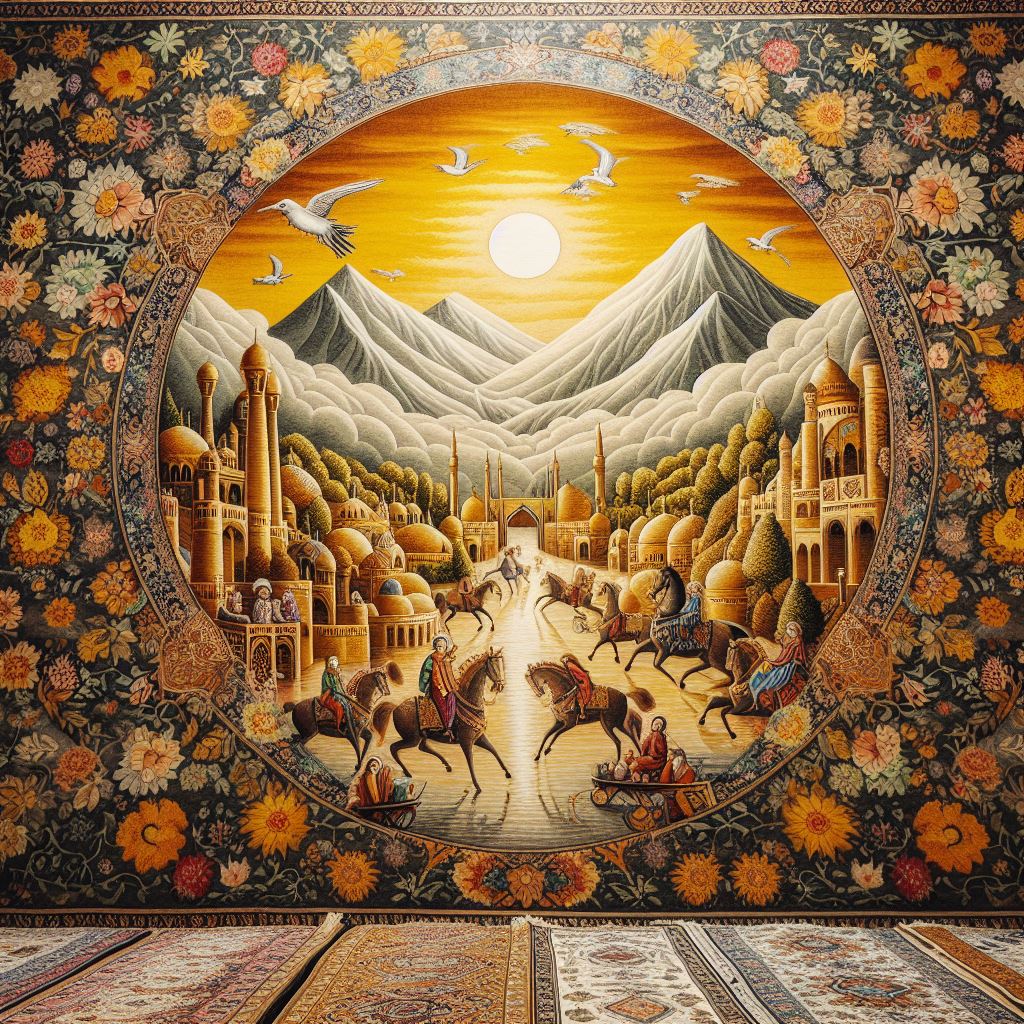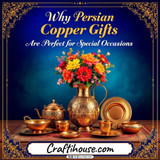The Timeless Art of Persian Handicrafts & Carpets .
The Timeless Artistry: Exploring the Uniqueness of Persian Handicrafts and Handmade Carpets
In the heart of Iran lies a treasure trove of cultural heritage that spans centuries—Persian handicrafts. Among these exquisite creations, handmade carpets stand out as a testament to the ingenuity, skill, and artistry of Iranian artisans. Each thread woven into these carpets carries a story, a tradition, and a piece of Persian culture. Let's delve into the uniqueness of Persian handicrafts, focusing on the unparalleled beauty of handmade carpets.
A Tradition Woven in Time:
The tradition of carpet weaving in Persia dates back thousands of years, with evidence of carpet-making found as early as the 5th century BCE. Over the millennia, this art form has evolved, influenced by various cultures, dynasties, and historical events. Yet, amidst these changes, Persian carpets have maintained their distinct style, characterized by intricate designs, vibrant colors, and unparalleled craftsmanship.
Intricate Designs and Patterns:
What sets Persian handmade carpets apart is the meticulous attention to detail in their designs and patterns. From geometric motifs to floral arrangements, each element is carefully crafted by skilled artisans, often using traditional techniques passed down through generations. These designs not only serve aesthetic purposes but also convey deeper meanings, reflecting aspects of Persian mythology, nature, and spirituality. Rich Cultural Symbolism: Beyond their aesthetic appeal, Persian carpets are rich in cultural symbolism. Every motif, color, and pattern carries significance, representing themes such as fertility, protection, and prosperity. For example, the "Tree of Life" motif symbolizes immortality and the interconnectedness of all living beings, while the "Paisley" motif represents the Cypress tree, a symbol of life and eternity in Persian culture.
Masterful Craftsmanship:
The process of creating a Persian handmade carpet is a labor-intensive endeavor that requires skill, patience, and precision. From spinning the wool to dyeing the yarn and knotting each thread by hand, every step is executed with utmost care. It's not uncommon for a single carpet to take months or even years to complete, resulting in a masterpiece that will last for generations.
Enduring Beauty and Value:
One of the most remarkable aspects of Persian handmade carpets is their enduring beauty and value. Unlike mass-produced rugs, each handmade carpet is a unique work of art, imbued with the soul of its creator. As such, these carpets are not just decorative pieces but cherished heirlooms that hold both sentimental and monetary value, often being passed down from one generation to the next.
Preserving a Heritage:
In an increasingly globalized world, the preservation of traditional handicrafts like Persian carpets is more important than ever. These cultural treasures not only showcase the artistic achievements of past generations but also provide livelihoods for countless artisans across Iran. By supporting the handmade carpet industry, we not only enrich our homes with beauty but also help sustain a living legacy for future generations to appreciate.
Conclusion:
Persian handmade carpets are more than just floor coverings; they are timeless expressions of art, culture, and craftsmanship. With their intricate designs, rich symbolism, and masterful craftsmanship, these carpets continue to captivate the hearts and minds of people around the world. By embracing and preserving the tradition of Persian handicrafts, we honor the legacy of artisans who have dedicated their lives to creating these exquisite works of art.
Recent Posts
-
Why Persian Copper Gifts Are Perfect for Special Occasions
*Intro:* Some gifts shine for a moment. Others are cherished for a lifetime.Persian copper gifts bel …12th Jul 2025 -
Top 5 Cultural Gifts to Buy in Dubai (That Actually Mean Something)
*Intro:* If you’re visiting Dubai and want to bring home more than just a magnet or perfume bo …11th Jul 2025 -
The Best Souvenir Shop in the UAE? Why CraftiHouse Stands Out from the Rest
The Best Souvenir Shop in the UAE? Why CraftiHouse Stands Out from the Rest Souvenir shopping in the …10th Jul 2025





